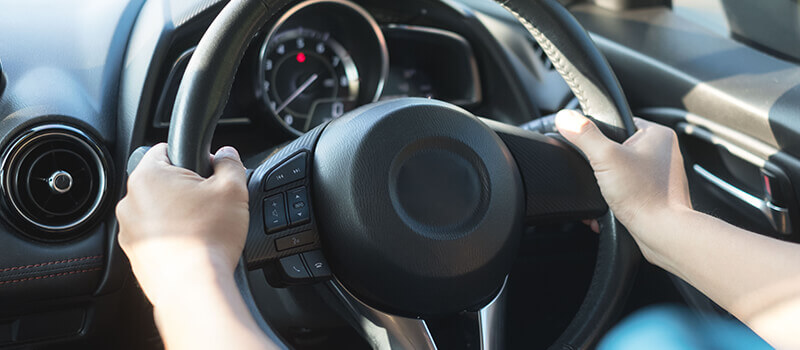Roundabouts are becoming more common, especially in more modern towns/cities where development has occurred in the last 20 years. If you're taking your driving lessons in Milton Keynes, you will be more than familiar with roundabouts as Milton Keynes is famous for it's many roundabouts. The objective of a roundabout is to keep traffic moving more and to not have traffic waiting unnecessarily, especially during peak times, therefore, roundabouts are generally considered more effective than traffic lights. Standard large roundabouts usually have 3 exits. Left, ahead and right. It’s not uncommon to see roundabouts with 5,6 and 7 exits. These are often referred to as Spiral roundabouts.
How to identify a roundabout?
On the approach you will often see at least 1 sign with directions, often 2 signs. If you see two signs on the approach, then the first sign usually provides directions to towns/cities/motorways etc. The second sign is usually dedicated to more local areas within the city you are driving within. If there are no road signs on the approach then you should look out for the layout and road markings, as soon as you see the roundabout coming up, start the MSPSL routine in good time for a safe and timely approach.
Mirrors:
Check your interior mirror in good time followed by the relevant door mirror. Look out for cars following close, overtaking and undertaking.
Signal:
If you are turning left or right you will need to put a signal on in good time so other road users know what your intentions are. Be mindful, if you are in the left hand lane and you want to turn right, then you will need to apply the signal early, to let other road users know you need to change lanes.
Positon:
Being in the correct lane on the approach to a roundabout is vital. Before you change lanes it’s always a good idea to check your blind spot first. When adjusting your lane position, make sure it’s gradual and in good time. Never swerve across lanes. Don’t change your vehicle position if someone is passing you, wait until they have passed.

Speed:
At high speeds you should be applying the brake pedal before the clutch pedal. If you push the clutch down too early, this could cause coasting which will affect your overall stopping distance and cause more wear and tear on your brakes.
As a general rule, you should expect to slow down to at least 25-30mph for most large roundabouts. At these speeds, 3rd gear is often selected. However, if you need to slow down less than 20mph then expect to use/need 2nd gear to pull away. If you are slowing down to less than 10mph then be prepared to use 1st gear. Your speed and gear choice will be dictated by the type of roundabout and the activity/cars using the roundabout at the time.
Look:
Make sure you look early on the approach to the roundabout. Early vision = early decision. If you don’t check the roundabout early, you may find your approach speed is too fast later. Try to check the roundabout regularly. It’s not uncommon to check the right hand side of the roundabout (the main danger area) more than 5 times. The busier the roundabout the more observations required. Don’t forget to glance ahead, as you can’t go anywhere until the car in front has left the roundabout.
What should you do once you are on the roundabout?
Turning left:
Keep left, close to the kerb/edge of road (usually a drain width). Always come off in the left hand lane, be mindful or vehicles overtaking and how they overtake. Check your interior mirror and right door mirror (minimum) as you emerge onto the new road. Cancel your signal once you are on the new road.
Following the road ahead (2nd exit):
Based on two lanes on the approach, it’s normal practice (unless road signs say otherwise) to use the left hand lane. Keep to the left and almost aim for the island on your left, by doing this you should stay in your lane. Be mindful vehicles may be on the right side of you and they could be turning right or coming off at the same exit as you (2nd exit) in the overtaking lane. As you pass the first exit, make sure you check your interior mirror, left door mirror and apply a left signal. Just as you come off the roundabout (2nd exit) check your interior mirror and right door mirror (minimum).
Turning right (3rd exit):
Assuming you are in the right hand lane on the approach, you will need to emerge onto the roundabout and almost hug the roundabout (stay close to it) until you pass the second exit. As you approach the 2nd exit, check your interior mirror and left door mirror) if it’s safe, apply a left signal and then gradually manoeuvre your vehicle over to the left hand lane exiting the roundabout for the 3rd exit. As you come off the roundabout and enter the new road, check your interior mirror and right door mirror. Look out for vehicles following closely and those trying to overtake or cut in front of you.